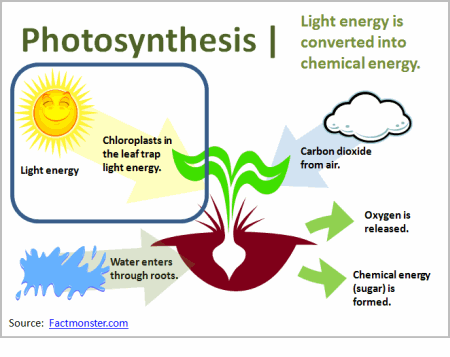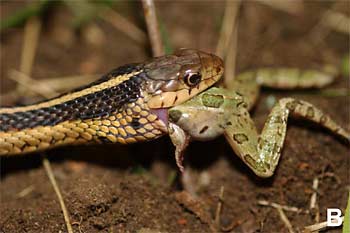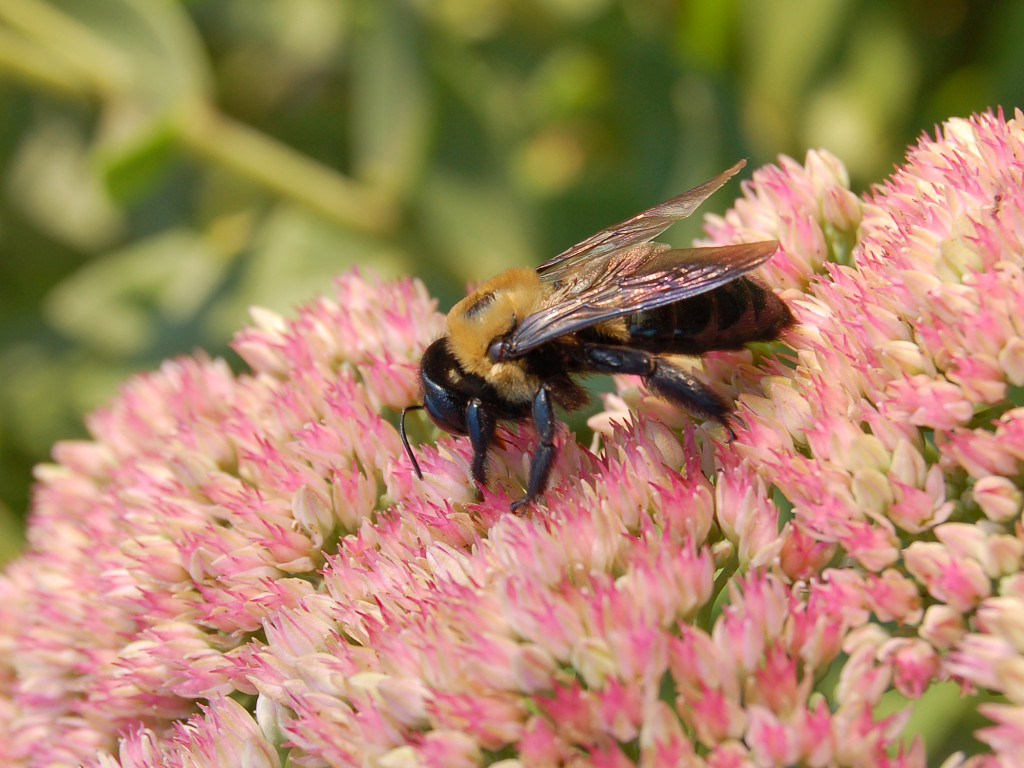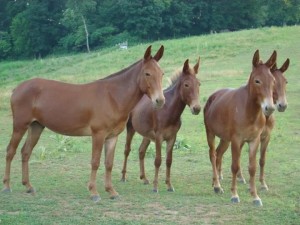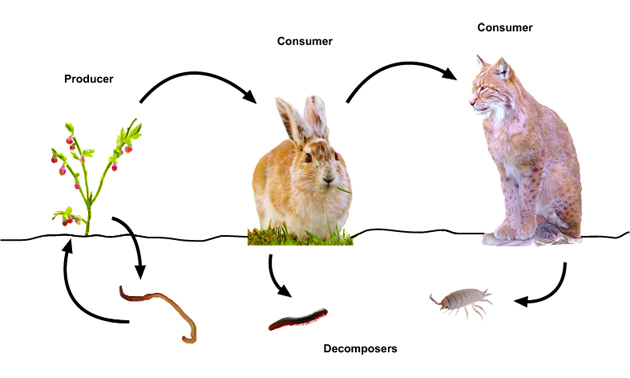Interactions In The Environment
What is an Ecosystem?
An ecosystem is a community where biotic and abiotic elements interact. Ok, so what does that mean??
First of all, the terms biotic and abiotic, refer to living things (biotic) and non-living things (abiotic). The prefix “a” means “without”. Please note that abiotic does not primarily refer to things that used to be alive but are now dead. So rocks are a good example of an abiotic factor, but a rotting tree stump is not. Does that mean that a rotting tree stump is completely excluded as an abiotic factor. I must admit that I don’t have a good answer for that. Certainly aspects of the rotting stump are still alive and hence biotic in nature, but soil is generally considered to be an abiotic factor. So when does the rotting stump turn enough into soil to count? In any case, there are better examples to be had for abiotic factors, such as temperature, light intensity, oxygen levels, pH levels etc…
So biotic elements are things that are alive, like trees, squirrels, you and me, algae etc. Biotic elements have five basic needs for their survival:
- oxygen*
- water
- food
- energy
- suitable habitat (a place to live)
Notice the star next to oxygen? There actually are actually organisms that do not in fact require oxygen for their survival. Try to guess where we might find them.
Two of the primary interactions that living things can have with one another are habitat and food. Trees provide shelter for birds and squirrels, deer and other grazers feed on leaves, predatory animals hunt other animals for food or use each others abandoned burrows for a place to live. Let’s take a closer look at these interctions:
The Role of Producers:
If we wanted to pick the single most influential abiotic element that influences life on Earth it should probably be the Sun. The Sun provides us with energy in the form of light and heat, both of which are important for most if not all forms of life either directly or indirectly. Plants need light to make food and in the Spring, it is the rising of temperatures that signals and triggers growth.
The one thing that makes plants so amazingly important in all our lives is the fact that they can produce their own food from light, water and the gas carbon dioxide ( CO2). They do this through a process called photosynthesis by which they combine water and oxygen into sugar using energy in the form of sunlight. This is why we call plants producers. In the end, almost all types of organisms on our planet (there are exceptions) either depend directly on the sun, which means they are plants, or they eat plants or they eat things that have eaten plants or they eat things that have eaten things that have eaten plants, or… well, I hope you get the picture.
But wait, there is more! Plants don’t just provide almost all life on our planet with the energy needed to survive, they also produce oxygen in the process and provide shelter and habitat to countless species.
Interactions:
We have already met interactions between producers and other living things. A cow, for example, feed on grass and absorbs some of the energy stored on the grass for its own use. The cow consumes the grass and thus we call organisms that eat (consume) other living things for survival consumers. When living things interact with one another these interactions can harm one of the “participants”. For example, when a snake eats a frog, the frog dies and the snake absorbs part of the energy stored in the tissues of the frog.
That’s good for the snake but very bad for the frog.
Other interactions can benefit each of the participants. When a bee collects nectar from a plant it is also dusted with pollen which in turn transports it to the next flower it visits, which is hopefully a flower from the same species. In this way both species profit from their interaction.
Some of these mutually beneficial interactions go so deep and are so prolonged that both species depend on one another in such a way that they are called symbiotic which means “living together”.
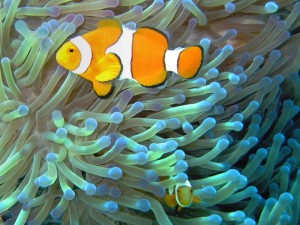
Populations and Communities:
As we consider interactions in the environment, we are not only looking at the way that individual living things interact with one another but we will also consider entire populations and communities.
Populations:
Populations are collections of individuals that belong to the same species that live in the same area. An example would be all the ducks of the same species in a pond.
Species:
A species is the collection of all individuals that are so closely related genetically that they can produce fertile offspring. Some organisms are able to reproduce, but their offspring is sterile, which means that the offspring cannot reproduce. An example of such a situation are donkeys and horses. A cross between these two species is called a mule, but mules are infertile.
Community
A community is made up of populations of different species that live in the same ecosystem. The interactions between these populations and the local abiotic elements make up the ecosystem.
Consider a pond, for example. In that pond are a variety of insects and amphibians. Many of the different species of amphibians may compete for the same insects as a food source and may be subject to predation by snakes, raccoon and birds. All of these species use the pond as a source of water and many use it as their habitat.
Types of Consumers:
Consumers eat living things to get nutrients. They are classified based on what it is that they eat. Herbivores eat plants, carnivores eat meat and omnivores eat a mixture of both.
We also consider some special consumers.
Scavengers:
Scavengers are consumers that do not usually kill their own food but feed off the remains of dead animals.
Detritivores
Detritivores feed off the waste that is produced byother living things.
Decomposers
Decomposers are consumers that break down dead plants and animals into their basic components.
These three types of consumers are like nature’s clean-up crew. without them plants wouldn’t have nutrients for growth and dead animals and planets wouldn’t decompose but wold just litter the ground where they fell.
Energy Transfer
Some of the light energy from the sun that reaches our planet is absorbed by green plants and stored in their cells. When a herbivores eats plants it absorbs a portion of that energy, but not all, and uses it to build its own body and power its actions. A carnivore may then eat the herbivore and absorb some of its energy and so on.
In this way, living things pass on energy that ultimately came from the sun in food chains and webs.
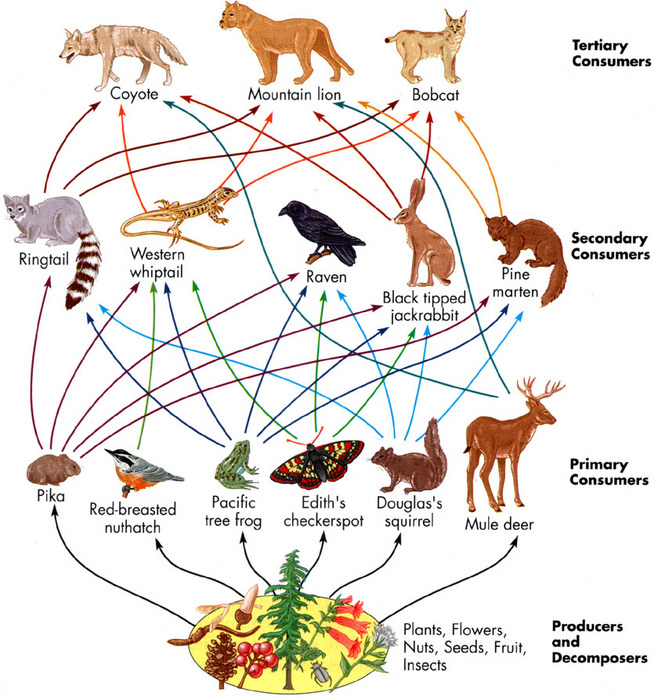
The arrows indicate the direction in which energy and materials flow. (This is important)
Energy Pyramids:
Ecologists estimate that only about 10 percent of the energy taken in by a food source is available to the consumer. This means that a consumer must take in multiple food sources all the time. Consider what that means for our food web above.
If a frog eats 10 earthworms in a given time span and a pine marten eats 10 frogs during the same time, the pine marten depends on not 10 but 100 earth worms for its survival. Each time you go up one step in the food chain you increase the need for supporting organisms by a factor of ten. That means that there have to be a lot more earth worms than there are pine martens. This is called a food or energy pyramid.
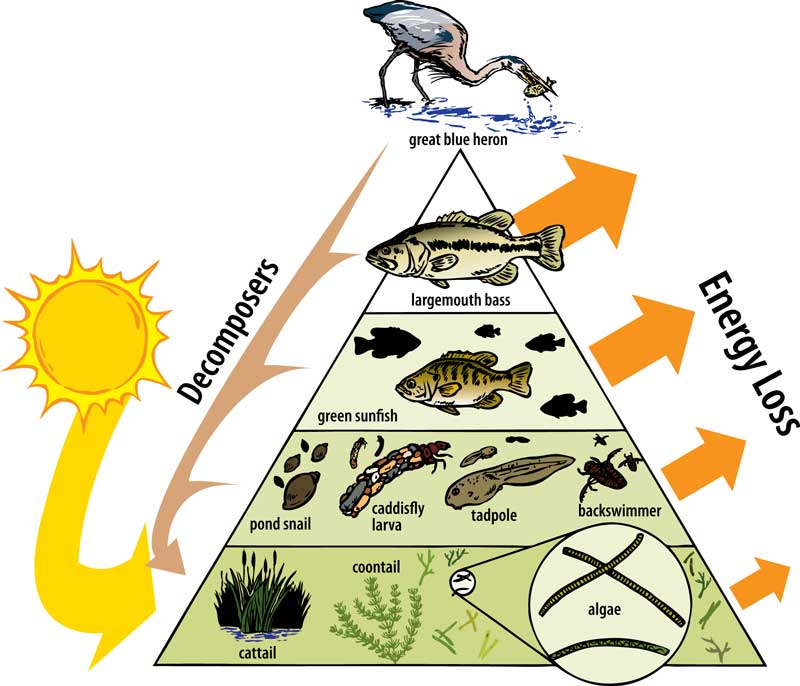
There are different layers in the energy pyramid labeled:
Producers (we know this one already)
Primary consumers: Organisms that feed on plants
Secondary consumers: Organisms that feed on primary consumers but may be eaten by carnivores and omnivores in the last level above.
Tertiary Consumer: These organisms tend to be the biggest and strongest consumers in an ecosystem.
As we go up the energy pyramid, the number of individuals in a group must go down because of the need to feed on multiple organisms in the layer below.
Cycling of Matter:
The last part to complete our picture of ecosystems is how matter is cycled through the food web and reappears at the bottom of the energy pyramid.
Matter moves from the producers to primary, secondary and tertiary consumers and is then recycled by detritivores, scavengers and decomposers.
Changes in Ecosystems:
There are many things that cause changes in ecosystems. Many are natural but for a long time, humans have had an influence on the ecosystems of our planet. Habitat destruction, pollution and climate change are just three of the big and well know ones. We will look at another issue that we can observe right in our own backyards called bioinvasion.
Bioinvasion happens when an organism (called a foreign species) enters an ecosystem to which it usually does not belong. Since the ecosystem does not usually contain this species it may not have natural predators in that ecosystem and thus can multiply to a fantastic degree. In the process it may deplete food resources and out-compete native species in the same ecological niche.
You will research an invasive species of your choice and prepare a presentation of it and the challenges it presents to the invaded ecosystem.
Invasive Species Information Sheet
As a practical final project we will build our own miniature ecosystems using 2L pop bottles.
Eco-columns Design Challenge Rubric
